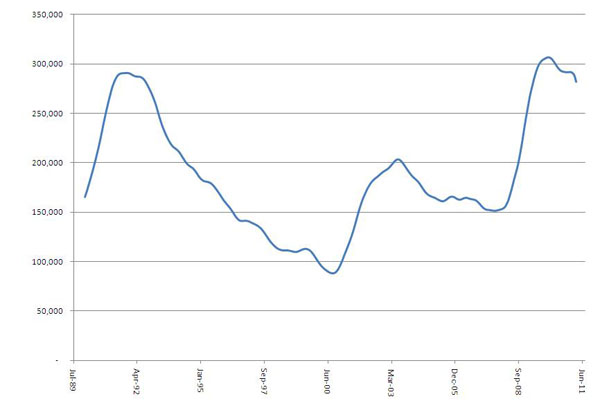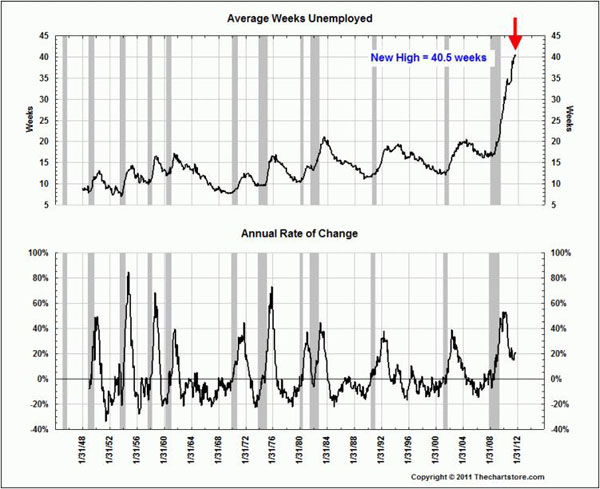Unemployment in Massachusetts: It's Worse Than It Seems
Massachusetts has done relatively well (or maybe less bad is more apt) in terms of unemployment. Our current rate is 7.4 percent, far better than the national average of 9.1 percent.
But even with a rate of 7.4 percent, that means we’ve got about 130,000 more unemployed people than our pre-recession level of unemployment.
 Source: U.S. Bureau of Labor Statistics, Local Area Unemployment Statistics.
Source: U.S. Bureau of Labor Statistics, Local Area Unemployment Statistics.
And digging below the surface of that 7.4 percent yields some other frightening information.
Our state has a disturbing split between the haves and have-nots in terms of jobs. The metro Boston area has strong employment — while some of the other cities in the state, like Fall River, New Bedford, and Lawrence have unemployment rates above 11 percent.
And there are three national trends working against a recovery.
First, the recession is deeper and longer than any post-WWII recession. And if you look at the last four recessions chronologically, each one takes longer than the previous one before a recovery takes place.
 Number of Months After Peak Employment: calculatedriskblog.com.
Number of Months After Peak Employment: calculatedriskblog.com.
Next, people who are unemployed are out of work longer. In past recessions, twenty weeks of unemployment was typically the maximum average duration for unemployment. In this recession, its up to 40.5 weeks, and the trend is higher.
 Source: Based on U.S. Bureau of Labor Statistics data.
Source: Based on U.S. Bureau of Labor Statistics data.
Lastly, a phenomena to watch is underemployment. Northeastern’s Andrew Sum recently released some research that found just more than 200,000 individuals in Massachusetts were underemployed (meaning that they were working part-time, and therefore not counted as unemployed, but wanted and could not find full-time employment).
Nationally, the uptick in underemployment is evident in the U6 measure (blue line on the chart below) which includes all unemployed and underemployed. Relative to the traditional measure of unemployment (the olive green line), U6 has gone up, and the spread between the two has widened.
 Source: Chart created by “Autopilot,” based on Bureau of Labor Statistics data.
Source: Chart created by “Autopilot,” based on Bureau of Labor Statistics data.
We should take some comfort that Massachusetts is not in such bad shape as the rest of the country. But that’s cold comfort if you are unemployed, and the trends are not in our favor.


